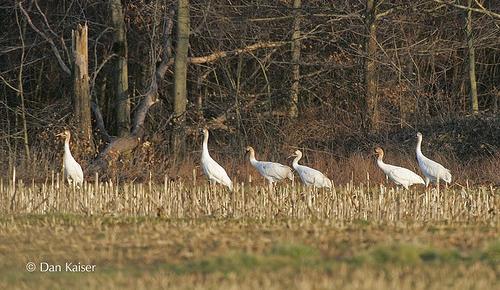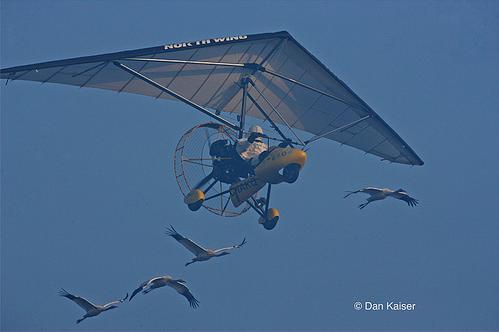
What is being done to save the species?
As you should have read on my homepage, there are only around 500 birds living today. This means the whooping crane is endangered. What does it mean to be endangered? An organism that is endangered means that the population could possibly become extinct due to small populations or threats on their habitat and increased predation. The IUCN (International Union for Conservation of Nature) lists three main groupings of threatened animals including extinct (with subcategories of extinct and extinct in the wild), endangered (critically endangered, endangered and vulnerable) and at lower risk (conservation dependent, near threatened and least concern). The main goal, of course, is to reach the point where the whooping crane will not have to be listed at all.
Now I will take you through a time line of the whooping cranes variations in population. It was estimated that there were about 1,500 whooping cranes in North America in 1850, and possibly even more before that. However, this was before western expansion by humans. When humans began to cultivate the land of the Great Plains and the southern Canadian prairies, the population of whooping cranes declined to only 21 individuals in 1941. The loss of cranes was also because of the drainage of these plains and prairies, hunting and more human disturbances. After five years (year 1946) there were five more cranes. However, this number slipped back to 21 in 1952. In 1958, the population that winters at Aransas National Wildlife Refuge grew to 32 cranes in 1958, and then up to 44 cranes shortly after that in 1965.
That isn't the end, however. Due to conservation efforts, the population raised from 44 to 138 cranes in the year 1988, and in 2005 the numbers were estimated to be around 220 individuals. In between 1988 and 2005, a LOT of things happened. The non-migratory flock of 14 was introduced into Florida's Kissimmee prairie in 1993, with 19 and 48 cranes being introduced each year. Since then, these cranes have successfully made this prairie a breeding ground where they can flourish. In 2001, the Whooping Crane Eastern Partnership introduced a migratory flight to the Necedah National Wildlife Refuge. The cranes were taught to migrate to Florida by using ultralight planes, as they are the only planes that are slow enough for birds to follow and they are also very light weight (150-360 pounds). The cranes do not know automatically to follow this aircraft, so "training" begins in Patuxent Wildlife Research Center in Maryland. Training the cranes includes exposing the eggs to crane calls and the sound of the ultralight engine. After the chicks hatch, they imprint on a person in a crane costume that will fly eventually fly the aircraft.
Even though there are multiple organizations and partnerships that are still working on the re-introduction of the whooping crane, these birds still face many dangers, and most of these reasons are because of us humans. Whooping cranes are still suffering from habitat loss that they could potentially breed and winter in. Predators and diseases threaten these cranes, like all animals, and whoopers often still suffer from gunshots even though there are bans in hunting areas where they stop for migrations and in areas where they breed and winter. These areas are closely monitored, but it still happens. Whooping cranes also are prone to getting caught in fences and hitting power lines, which would obviously not happen if they weren't put there by us. Power lines (especially those that are high-tension) is one of the most serious threats. Whooping cranes that are flying low may collide with these power lines and, if they aren't killed instantaneously, they often suffer from broken wings or other injuries and therefore become easier food for any decent sized predator in the area.
If you would like to see what you can do to help save these
beautiful cranes, please visit the following sites listed here:
Operation Migration
Whooping Crane Eastern Partnership
International Crane Foundation
National
Wildlife Federation
Return home if you'd like to start over, or visit my Facts page to learn other interesting tidbits about whooping cranes that I may not have mentioned in my previous pages here!

